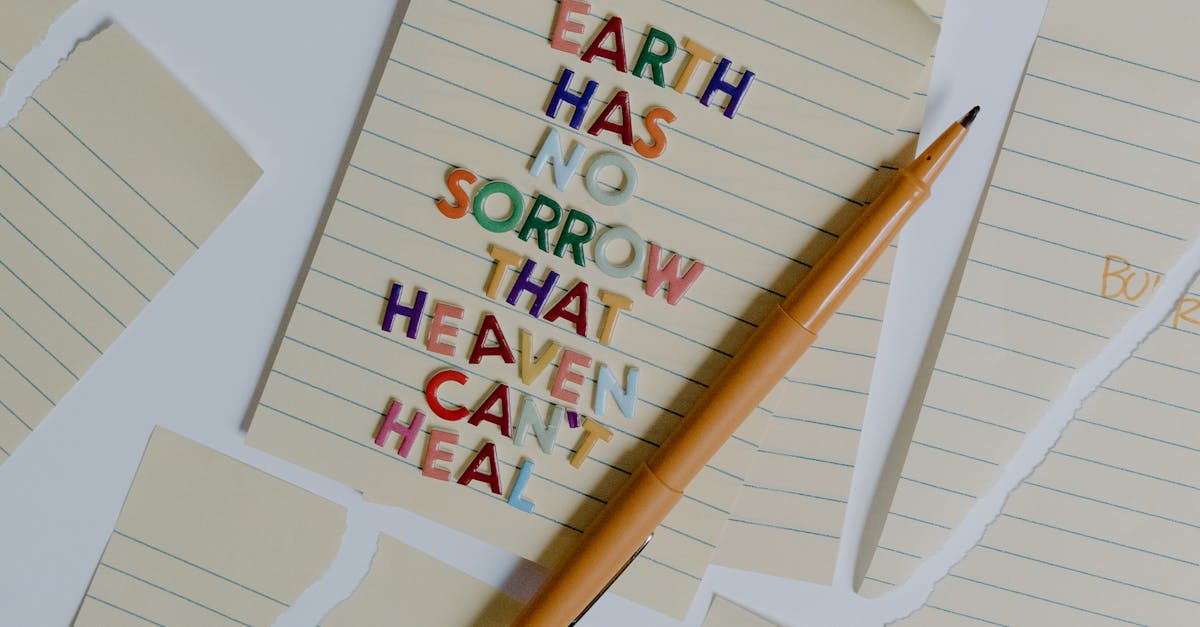
Mental Health Benefits Of Journaling With Art Vs Words
- October 02, 2024
- 5 min Read
- Views 675
Mental Health Benefits of Journaling with Art vs Words
In the hustle and bustle of modern life, maintaining mental health has become increasingly crucial. One effective method for improving mental wellbeing is journaling. While traditional journaling primarily involves words, an emerging trend highlights the mental health benefits of journaling with art vs words. This article delves into these benefits, comparing the advantages of both forms of journaling.
The Therapeutic Power of Words
Writing has long been known to have therapeutic benefits. When you record your thoughts, emotions, and experiences in a journal, it can serve as an outlet for stress and anxiety. For many, the act of writing is a cathartic process that allows the individual to organize their thoughts and make sense of chaotic emotions.
Engaging in written journaling helps to:
- Reduce stress levels by providing an outlet for expressing emotions.
- Improve self-awareness by reflecting on personal experiences.
- Enhance problem-solving skills by organizing thoughts on paper.
- Track behavioral and emotional patterns over time.
- Provide a sense of accomplishment and progress.
These benefits showcase how traditional journaling through words can be a powerful tool for maintaining and improving mental health.
The Healing Impact of Art
Artistic journaling, also known as art therapy, is another effective way to enhance mental health. This type of journaling involves creating visual representations of thoughts and emotions, using mediums such as drawing, painting, and collage. Art journaling taps into the creative part of the brain and can provide a different therapeutic experience compared to writing.
Engaging in art journaling offers several mental health benefits, including:
- Reducing anxiety by providing a non-verbal way to express emotions.
- Enhancing self-expression and creativity, especially for those who find it hard to articulate their feelings with words.
- Improving emotional resilience and coping skills by exploring emotions through artistic representation.
- Boosting self-esteem as individuals create visual pieces they can be proud of.
- Encouraging mindfulness and presence as the individual focuses on the creative process.
Art journaling can be particularly beneficial for those who struggle with verbal expression, offering a unique and potent way to engage with and reflect upon their mental health.
Comparing Benefits: Art vs Words
When considering the mental health benefits of journaling with art vs words, it's clear that both methods offer unique advantages. The choice between the two—or the decision to incorporate both—depends largely on the individual’s personal preferences and needs.
The benefits of written journaling often cater to those who need to articulate and organize their thoughts and experiences. It can be especially useful for individuals looking to develop a deeper self-understanding and to address specific problems through logical processing and reflection.
On the other hand, art journaling speaks to the imagination and emotions in a way that words sometimes cannot. It provides a visceral and tangible method to explore complex feelings and fosters a sense of freedom and non-judgment that can be incredibly liberating for those experiencing stress, depression, or anxiety.
While both methods serve the purpose of enhancing mental health, they do so through different pathways. Integrating both written and artistic journaling could maximize their combined benefits, offering a holistic approach to mental wellness.
Guide Steps: Combining Art and Words in Journaling
- Choose Your Journal: Select a journal that allows you to scribble, draw, and write freely. Mixed-media journals are great for this purpose.
- Set Aside Time: Dedicate a specific time each day or week for your journaling practice. Consistency is key to reaping the benefits.
- Start with Writing: Begin with a brief written entry about your day or your current thoughts and emotions.
- Add Artistic Elements: Supplement your writing with drawings, paintings, or collage that visually represent your feelings and experiences.
- Reflect: Take a moment to review what you’ve written and created. Reflect on any patterns or insights you observe.
- Be Kind to Yourself: Remember that this journal is a personal space. There’s no right or wrong way to express yourself.
FAQ
- Can I use both art and words in my journaling practice? Absolutely! Combining both can provide a well-rounded approach that taps into multiple facets of self-expression and reflection.
- Do I need to be good at art to benefit from art journaling? No, the goal is self-expression, not perfection. Art journaling is about exploring and expressing emotions, regardless of artistic skill level.
- How often should I journal for mental health benefits? Consistency is more important than frequency. Whether it's daily, weekly, or bi-weekly, choose a schedule that fits into your lifestyle and allows you to maintain a regular practice.
- Can journaling replace professional mental health care? While journaling can be a powerful tool for mental wellness, it should not replace professional mental health care when needed. It can, however, complement therapy and other treatments.
Tags: Mental Health, Journaling, Art Therapy, Writing Therapy, Self-awareness, Stress Relief, Emotional Expression
References:
People Also View
-
1
How to build a 10-minute workout routine for people with injuries
October 02, 2024 -
2October 01, 2024
-
3October 09, 2024
-
4October 03, 2024
-
5October 14, 2024
Categories
- Near Me 2147 Posts
- How To 548 Posts
- Where To 257 Posts
- Why 90 Posts
- How Much 97 Posts
- Travel 202 Posts
- Food And Drink 815 Posts
- Shopping 797 Posts
- Lifestyle 1050 Posts
- Automotive 364 Posts
- Digital Income 70 Posts








